Eclipse Model Design | 32007: 1/32 Me 163B SG 500 'Jägerfaust' Weapon
Reviewed by Kevin Futter
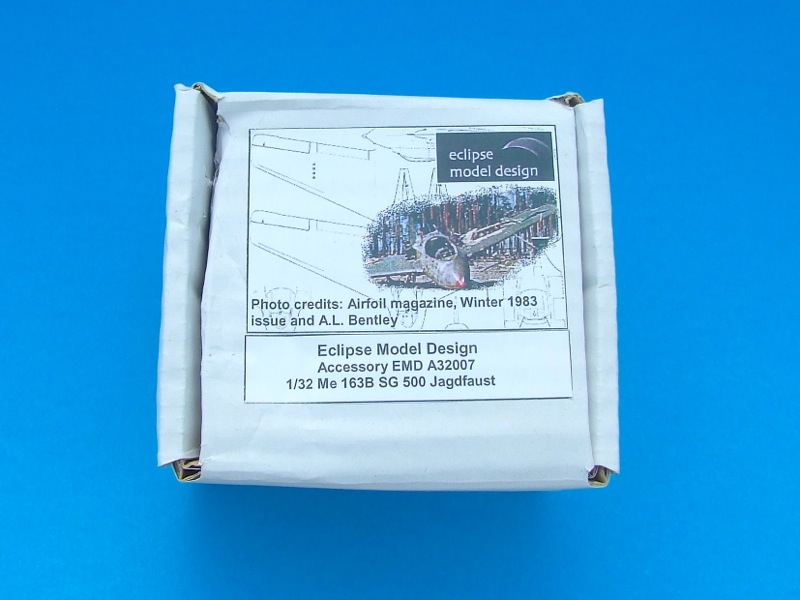
Eclipse Model Design (EMD) was started by LSP member Derek Bradshaw, and produces a number of resin upgrade sets for 1/32 scale aircraft kits. Derek's latest set is a SG 500 'Jägerfaust' weapon for the Hasegawa 1/32 Me 163B kit.
According to Wikipedia:
The SG 500 Jagdfaust was an experimental airborne anti-bomber recoilless rifle designed for use in the Me 163 Komet rocket plane by the German Luftwaffe during World War II. The weapon featured a simple form of automated trigger in which an optical photocell detected the dark silhouette of an Allied bomber replacing bright blue sky and triggered the firing of the armed Jagdfaust guns.
Sounds dangerous! In practise this meant a series of upward-facing cannon barrels embedded in the wings of the tiny rocket plane, and was reputedly responsible for downing at least one B-17. Derek's set provides all you need to model this rare variant of the Komet.
The set itself comes in EMD's now standard packaging box, the contents of which are as follows:
- 2 x grey resin parts (port and starboard) representing the SG 500 hardware;
- 1 x clear resin optical sensor trigger;
- 1 x 1/32 positioning template in clear acetate;
- 1 x set of Miracle Masks for national markings;
- 1 x 7-page EMD instruction leaflet;
- 1 x 7-page Miracle Masks instruction leaflet.
The heart of the set is of course the resin SG 500 parts, which are packaged in a resealable plastic bag and then carefully wrapped in bubble wrap.
The parts themselves are beautifully cast by Grey Matter Figures, featuring crisp detail and no obvious casting flaws. They include the port and starboard cannon assemblies in neutral grey resin, and the optical sensor trigger in clear resin. Watch out for this last part when you open the packet, as it's quite small and easy to miss...and just as easy to lose! The development of the master pattern for this set can be followed in the LSP forums.
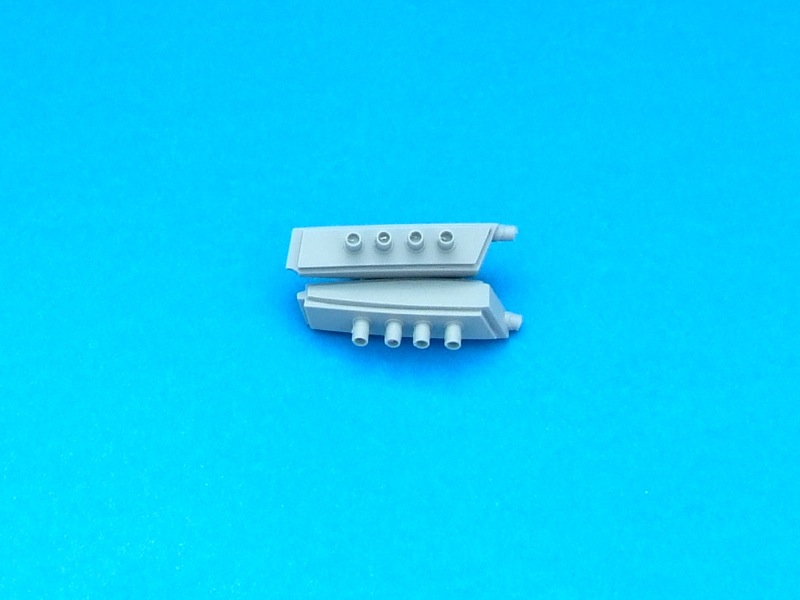
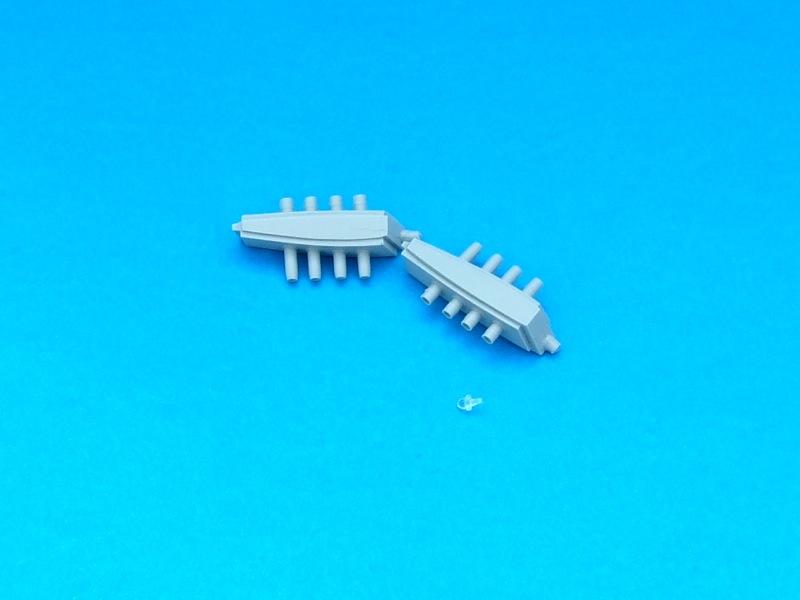
A nice touch that can't be seen in the photos above is the inclusion of the embossed letters "PORT" and "STBD" on the respective parts, ensuring that—as long as you're paying attention—you can't get them mixed up. And it should go without saying that they're present on surfaces that won't be seen after installation.
The instruction leaflet consists of seven pages spanning four A4 sheet, and is quite comprehensive. For the most part it features explanatory text accompanied by annotated photographs of the assembly sequence. There are also two pages of drawings by Arthur Bentley, reproduced with permission.

Derek takes great care to note that this is a conversion for experienced modellers, and that all care must be taken with measuring and cutting the donor kit. To aid this process, the set includes a full-size (ie, 1/32) template printed on clear acetate, which indicates the size and location of areas to be removed from the kit. I don't think I've ever seen something like this included in a conversion product before, so kudos to Derek and EMD for such remarkable thoughtfulness.
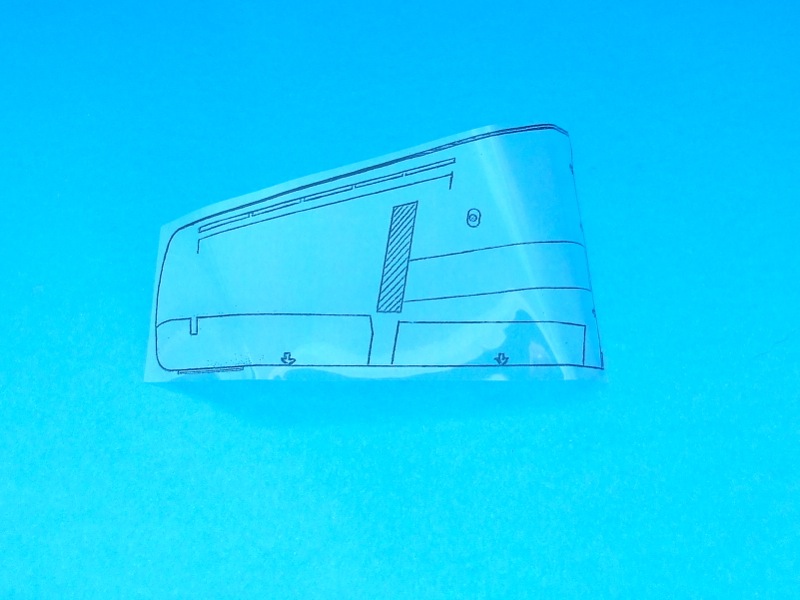
My example in the photo above suffers from being 'folded' into the packaging box, but this should not affect it in actual use. Simply tape the sheet in position over the kit's wings and use a sharp point to mark the corners of the shaded areas. Flip the acetate sheet over to use it on the other wing.
Paint Masks
The last item in the set is a small resealable bag of paint masks from Miracle Masks. These consist of four small sheets of national markings using what appears to be the standard vinyl material. There are no markings for specific aircraft included, so you will still need to source those from elsewhere.
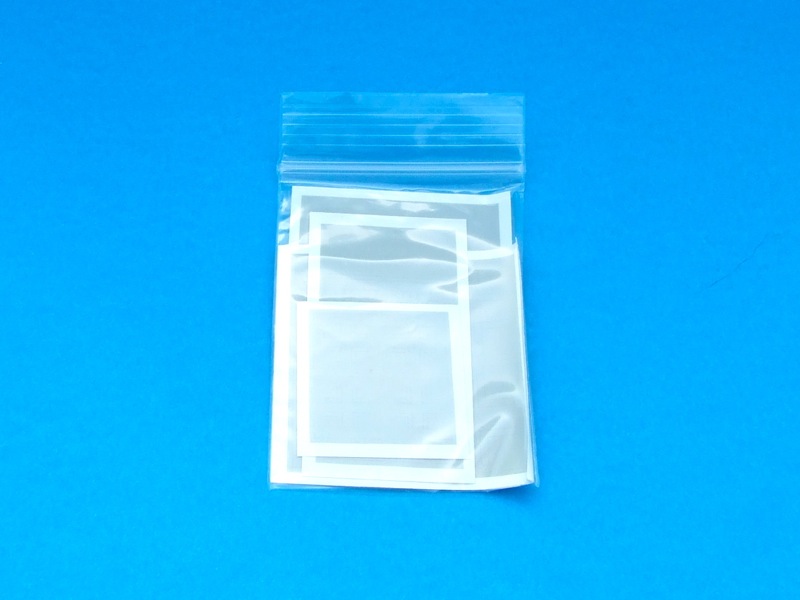
The main motivation for including the paint masks appears to be due to the upper wing national markings being placed directly 'over' the SG 500 assembly, making decals a difficult proposition. The relevant upper wing masks have cut-outs designed to allow the masks to be placed over and around the resin upgrade parts. Once again, thoughtful design and execution.
While the EMD instructions are quite comprehensive in dealing with the how and where of using these masks, the set also includes a seven-page instruction leaflet from Miracle Masks.
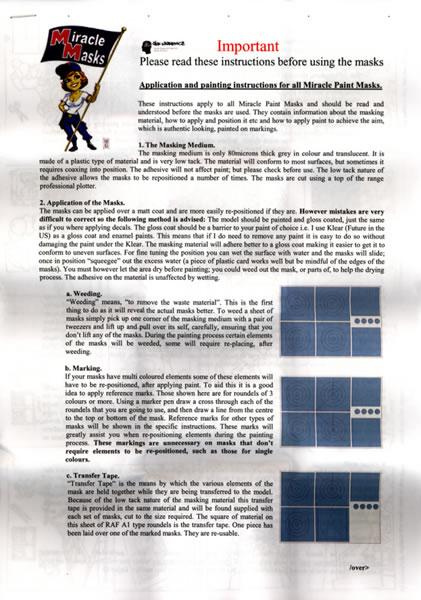
These instructions start with general advice about application and usage, and progress to specific advice about working with the particular masks supplied with this set. This is a highly useful collaboration between the two companies, and yet more evidence that EMD has left nothing to chance in ensuring that the modeller has everything they need to get the most out of this set.
Criticism
All this material crammed into one small packaging box comes at a price though, and leads me to my only criticism of the set. The box is really too small for the job in this case, and requires the acetate template to bent at each end in order to fit. This is obviously not ideal. The two sets of seven-page instructions also need to be folded tightly to fit, and they are difficult to flatten out completely once unpacked (as evidenced by their respective scans).
I'd much prefer to see EMD move away from a one-size-fits-all approach to packaging for sets like this, perhaps employ a larger, flatter box such as the one my Freightdog Seafire conversion arrived in. This would comfortably fit the clear template without bending, and all the instructional material without excessive folding. None of this detracts from the quality or utility of the parts themselves, but seems a bit at odds with the high level of thoughtfulness in evidence elsewhere in the set.
Conclusion
Minor packaging issues aside, I can highly recommend this set to anyone interested in doing something a little different with their Hasegawa Komet. It would certainly stand out on the competition or display table!
Thanks to Derek and Eclipse Model Design for the review sample.
© Kevin Futter 2013
This review was published on Saturday, April 06 2013; Last modified on Wednesday, May 18 2016


